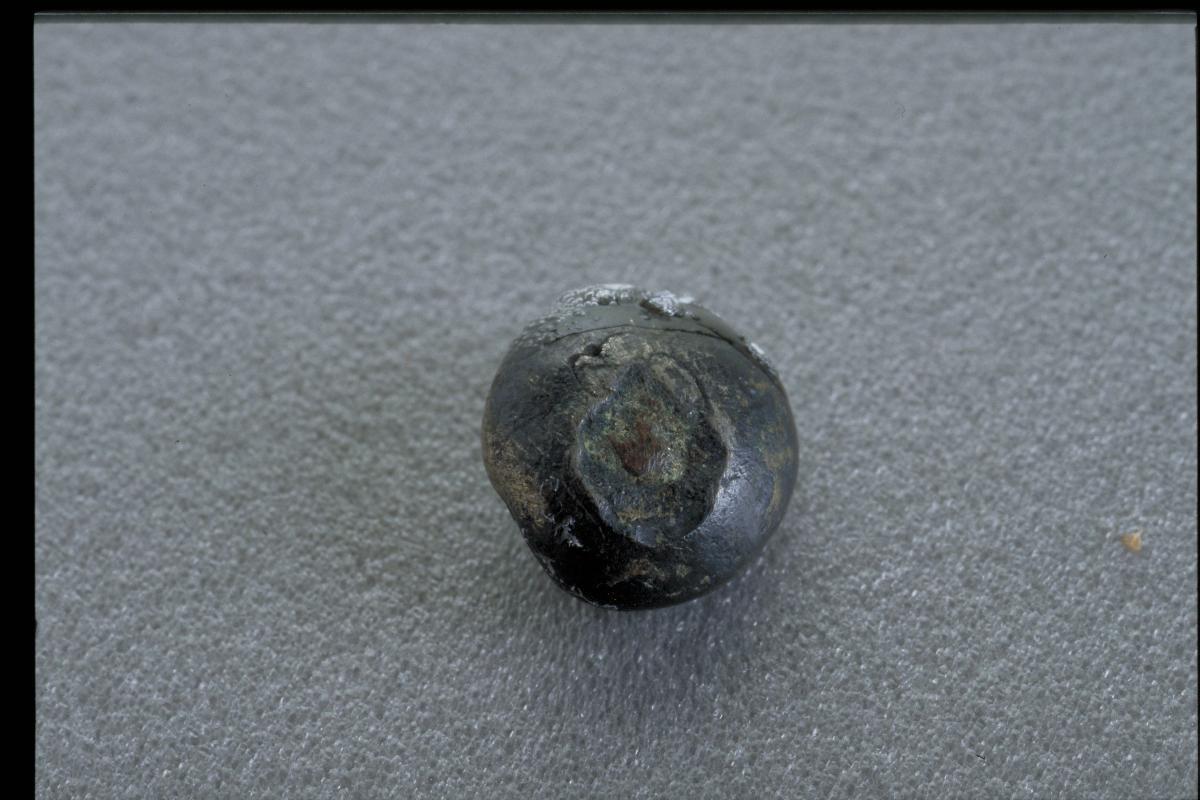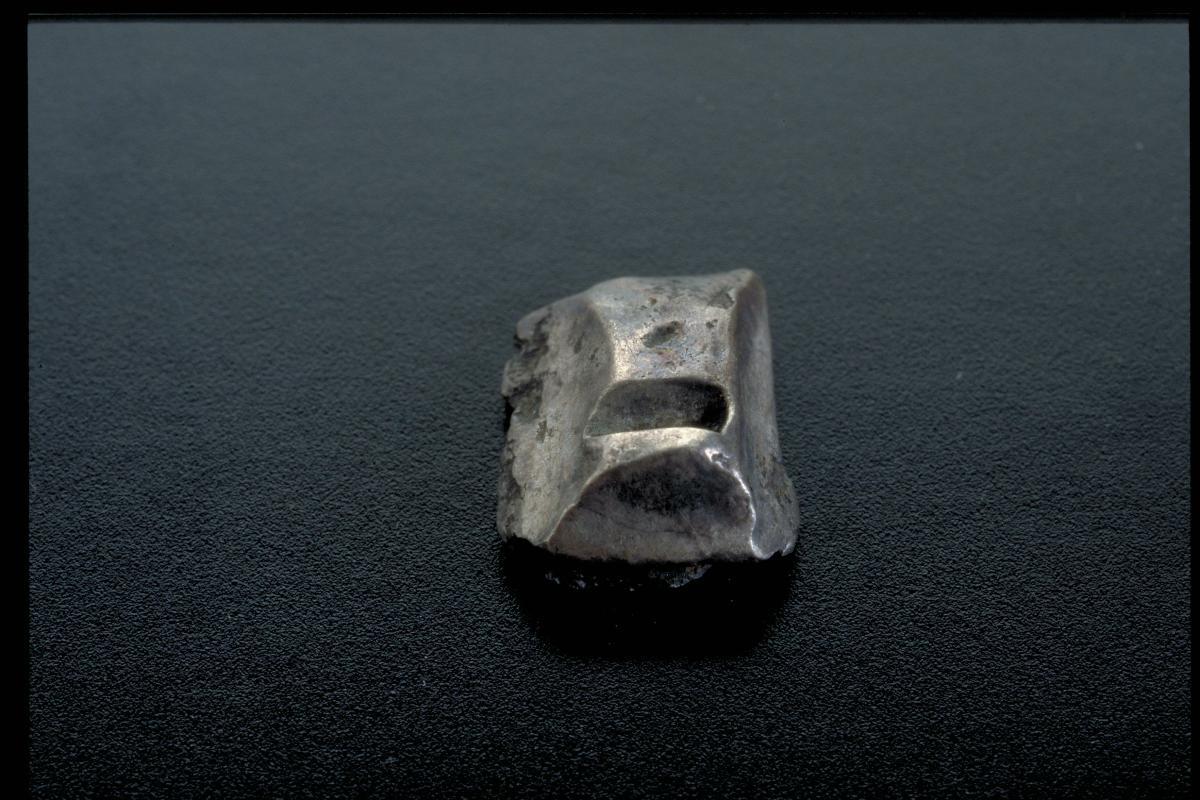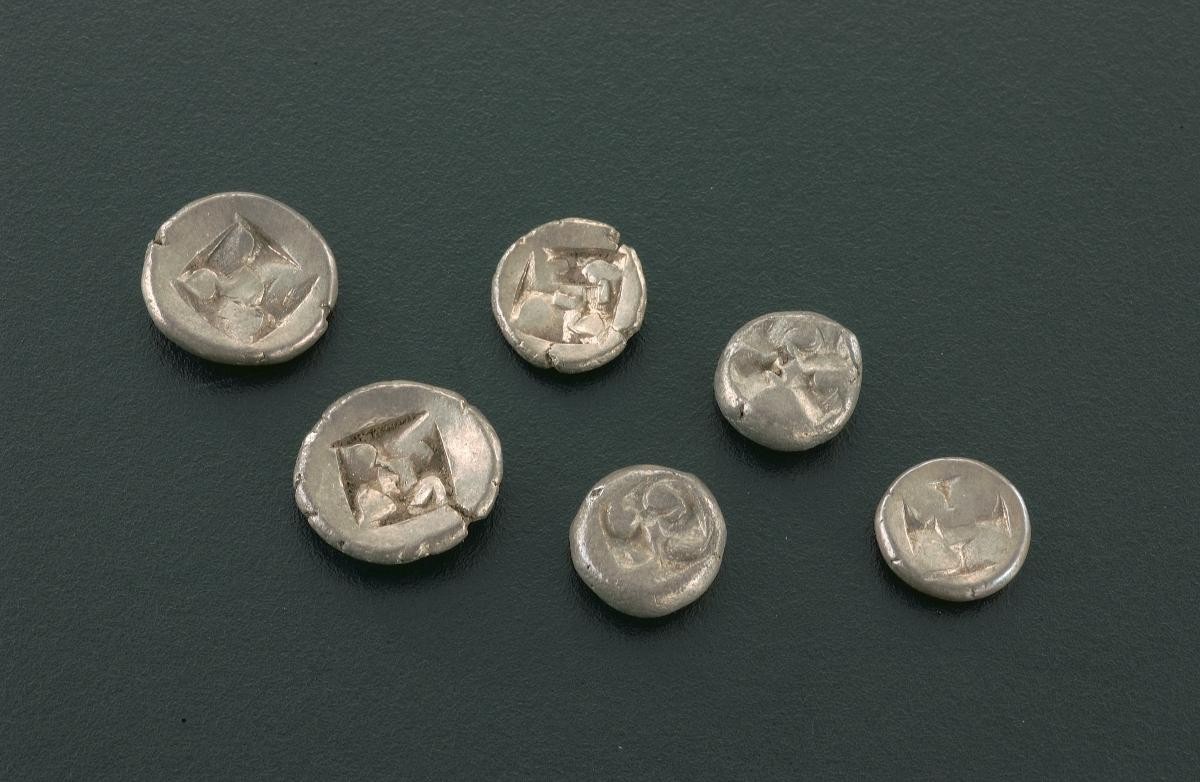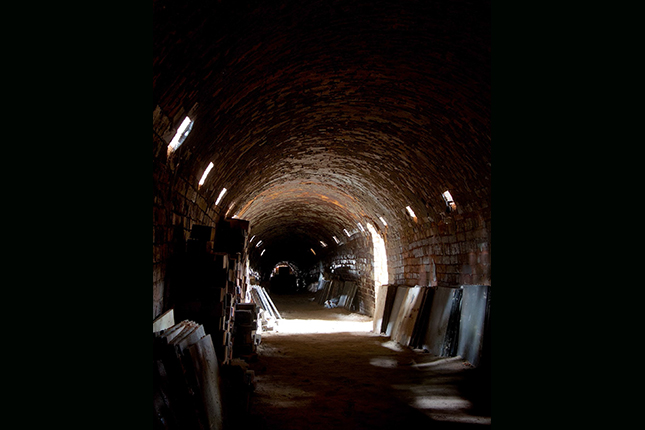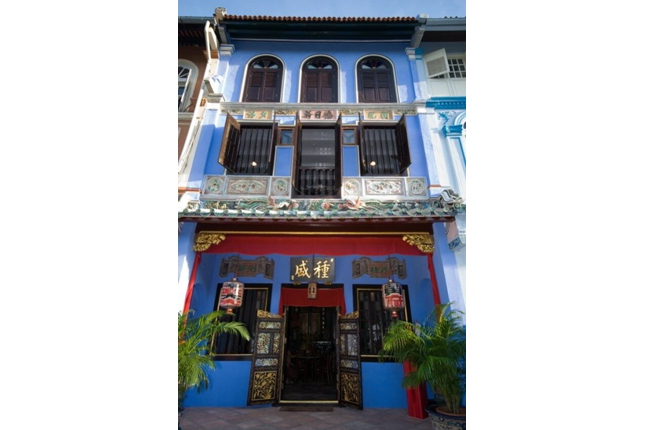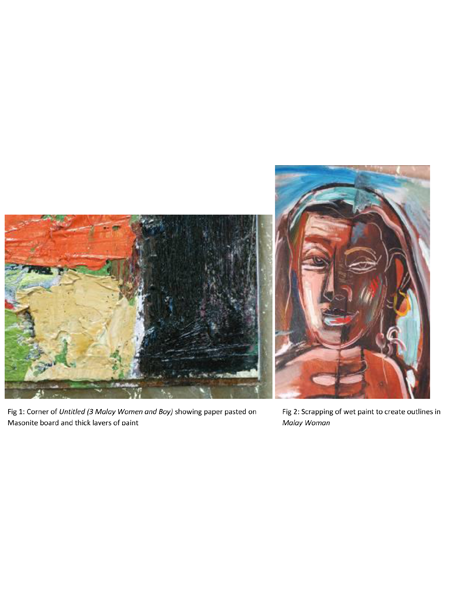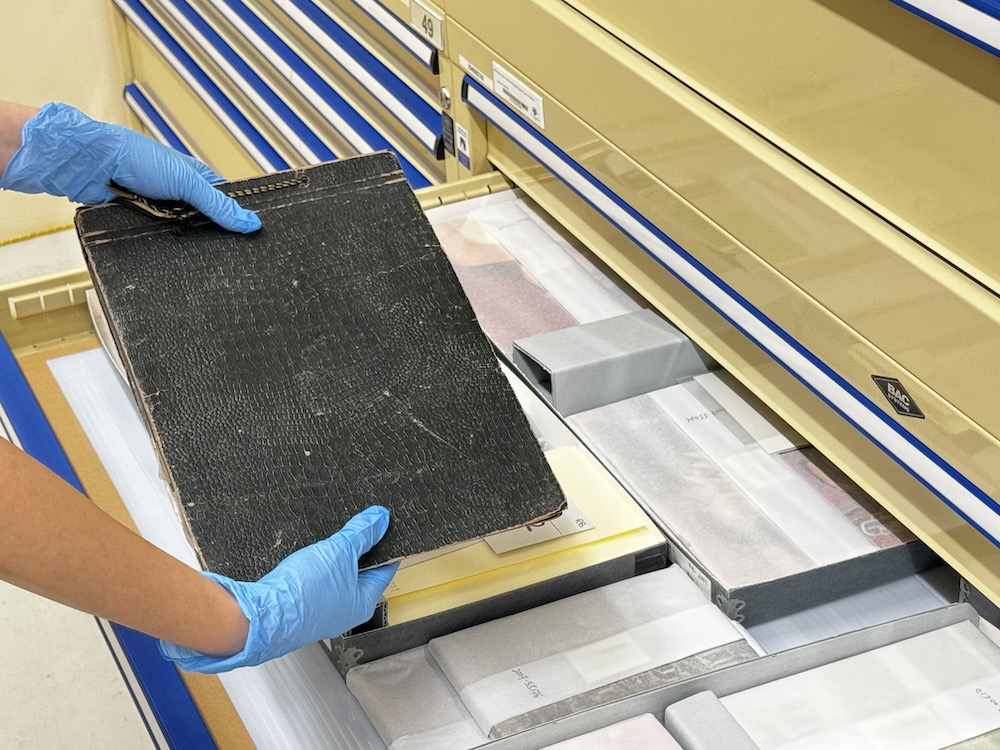This coin, also known as ‘piloncito’, is stamped on one side to produce a rounded depression with a line down the middle, and a single raised dot on either side of this line. On the reverse side, it may be inscribed with Sanskrit characters, curves, or grid marks. Javanese coins were used as currency around the 7th century to about 1350, when Chinese bronze coins replaced them as the main medium of exchange.




